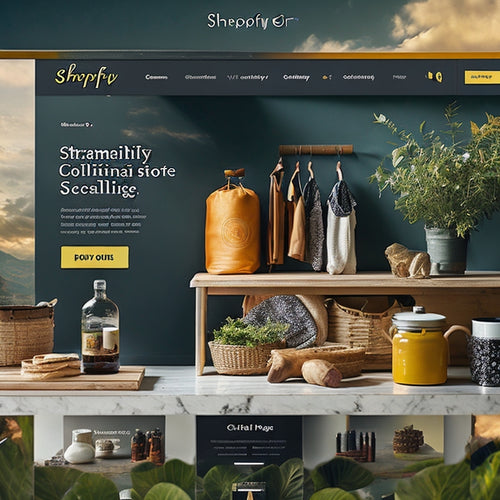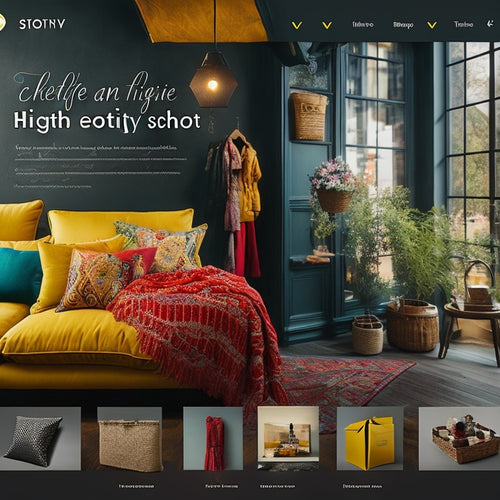
Retailers' Conversion Rates Unveiled: Surprising Insights
Share
Across various industries, retailers' conversion rates vary significantly, with apparel retailers leading the way at 3.0%, while mass merchant retailers trail behind at 1.5%. Device types also demonstrate distinct conversion rate patterns, with desktop users converting at 3.9% and smartphone users at 2.9%. Traffic sources show varying conversion rates, with direct traffic yielding 3.2% and referral traffic at 2.1%. Importantly, higher-order values correlate with higher conversion rates, with orders over $500 converting at 3.6%. Further analysis reveals more nuanced insights into the complexities of retailers' conversion rates.
Key Takeaways
• Apparel retailers boast the highest conversion rates, averaging 3.0%, surpassing other retail categories.
• Desktop users have the highest conversion rate at 3.9%, followed closely by tablet users at 3.3%.
• Direct traffic yields the highest conversion rate at 3.2%, outperforming email, paid search, and organic search traffic.
• Higher-order values correlate with higher conversion rates, with orders over $500 averaging a 3.6% conversion rate.
• Mass merchant retailers struggle with the lowest conversion rate at 1.5%, lagging behind other retail categories.
Conversion Rates by Retailer Type
Across various retail segments, apparel retailers boast the highest average conversion rate of 3.0%, followed closely by home goods retailers at 2.7%, and health/beauty retailers at 2.5%. This suggests that these industries have optimized their online shopping experiences, leading to higher conversion rates.
In contrast, specialty/non-apparel retailers and food/drug retailers trail behind with average conversion rates of 2.3% and 2.2%, respectively. This retailer segmentation highlights the importance of industry comparison in understanding conversion rates.
Device Type Conversion Rate Breakdown
Device type notably influences conversion rates, with desktop users exhibiting the highest average conversion rate of 3.9%, outperforming other devices by a noticeable margin. This disparity highlights the importance of optimizing user experience across devices.
To improve conversion rates, retailers should prioritize mobile optimization, as 2.9% of smartphone users convert, compared to 3.3% of tablet users and 3.9% of desktop users.
Here are some key takeaways:
- Desktop users convert at a rate of 3.9%
- Tablet users convert at a rate of 3.3%
- Smartphone users convert at a rate of 2.9%
Traffic Source Conversion Performance
When examining the conversion performance of various traffic sources, a notable disparity emerges, with direct traffic yielding the highest average conversion rate of 3.2%.
Email traffic follows closely, with a conversion rate of 2.9%, while paid search traffic and organic search traffic trail behind, with rates of 2.6% and 2.4%, respectively.
Referral traffic lags, with a conversion rate of 2.1%.
This traffic source comparison highlights the significance of understanding the conversion rate trends of each channel.
By recognizing these disparities, retailers can optimize their marketing strategies to maximize conversions and revenue.
Order Value Conversion Rate Insights
Examining conversion rates through the lens of order value reveals a marked correlation, as higher-order values tend to correspond with markedly higher conversion rates. This suggests that customers are more likely to complete a purchase when the order value is higher, indicating a lower price sensitivity.
Here are some key insights:
-
Orders over $500 have an average conversion rate of 3.6%, notably higher than orders under $50 with an average conversion rate of 1.5%.
-
Orders between $250-$500 have an average conversion rate of 3.2%, indicating a sweet spot for many retailers.
-
Orders between $100-$250 have an average conversion rate of 2.8%, highlighting the importance of customer segmentation to target high-value customers.
Industry Conversion Rate Benchmarks
Industry conversion rate benchmarks vary greatly across different retail categories, with apparel retailers boasting an average conversion rate of 3.0%, whereas mass merchant retailers lag behind with a mere 1.5%. This significant disparity highlights the need for retailers to understand their industry's average rates to optimize their conversion strategies.
| Retail Category | Average Conversion Rate |
|---|---|
| Apparel | 3.0% |
| Home Goods | 2.7% |
| Health/Beauty | 2.5% |
| Specialty/Non-Apparel | 2.3% |
| Mass Merchant | 1.5% |
Frequently Asked Questions
How Do Conversion Rates Vary by Retailer's Social Media Presence?
Examining the correlation between conversion rates and social media presence reveals that retailers with strong influencer partnerships and user-generated content strategies tend to have higher conversion rates, often exceeding industry averages.
Do Loyalty Programs Significantly Impact Conversion Rates?
Just as a well-tended garden requires nurturing, loyalty programs foster customer engagement, increasing purchase frequency and ultimately, conversion rates. Data suggests that effective loyalty programs can boost conversion rates by up to 15%, driving retention and revenue growth.
Can Personalized Product Recommendations Boost Conversion Rates?
Personalized product recommendations can greatly enhance conversion rates by improving customer engagement through targeted suggestions, leveraging behavioral targeting to tailor experiences, and fostering a sense of relevance, ultimately driving sales and revenue growth.
How Does Shipping Speed Affect Online Conversion Rates?
Just as a well-timed pit stop can make or break a racing team's chances, shipping speed can greatly impact online conversion rates, with 62% of customers citing fast shipping as a top priority, alongside return policies and customer reviews.
Do Conversion Rates Differ Between Rural and Urban Customers?
Geographic influences on conversion rates are significant, with rural customers exhibiting lower conversion rates due to limited access to high-speed internet and differing customer behavior, emphasizing the need for demographic segmentation in online purchase strategies.
Related Posts
-

Boost Sales With Top Shopify Cross-Sell Apps!
This article examines the utilization of various cross-sell apps on the Shopify platform to enhance sales. Specifica...
-

Top Shopify Popup Apps for Growing Your Business
This article provides an overview of the top Shopify popup apps available for growing businesses. Popups are commonl...

